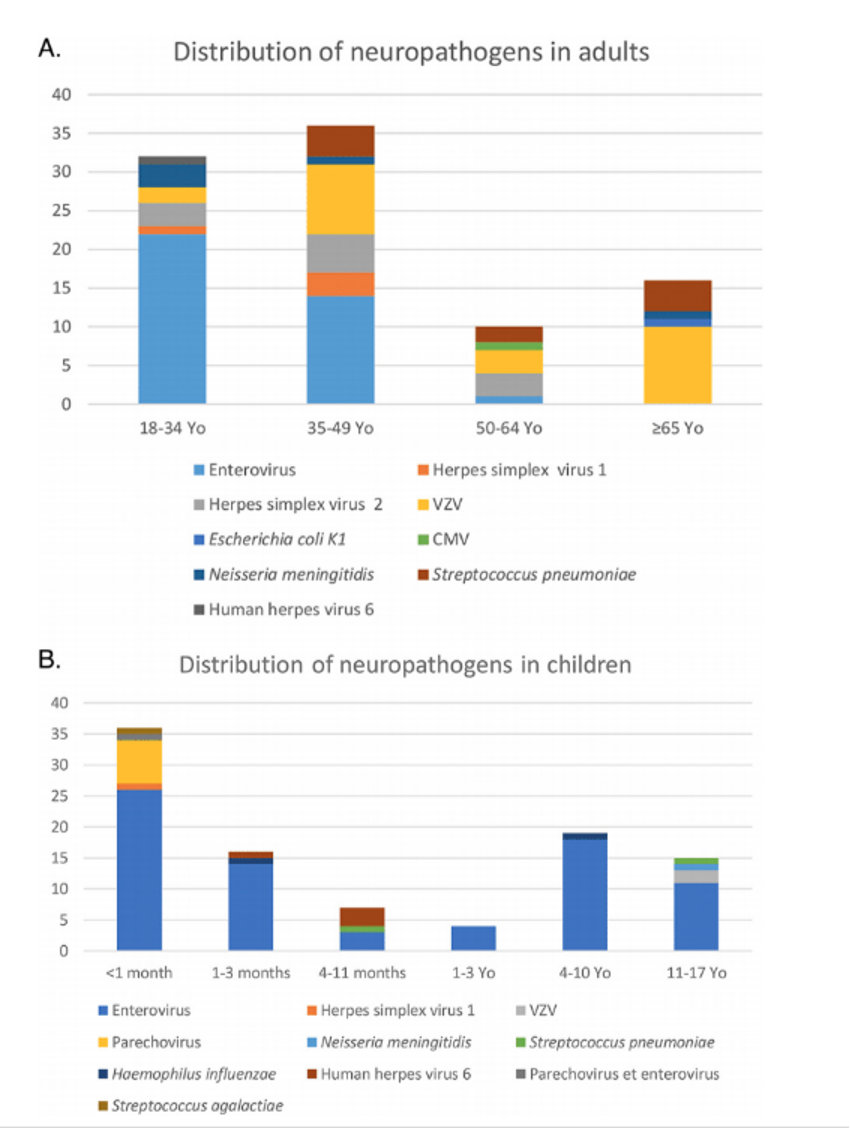All cases found to be iciHHV-6 were assumed to be false positives.
Multiplex testing for multiple viral and bacterial pathogens in cerebrospinal fluid (CSF) has helped make the diagnosis of central nervous system infections, particularly meningoencephalitis, simpler and faster. However, there is some evidence that such multiplex tests are ordered more often than is necessary.
Investigators at the University of Geneva retrospectively examined the results of the FilmArray meningitis/encephalitis PCR panel (BioFire Diagnostics, LLC), bacterial culture, and cell counts of CSF in 1,714 CSF samples. The samples were obtained from 1665 patients over 2.5 years—patients in whom central nervous system infection was suspected, including children and adults, immunocompetent and immunocompromised patients (11%). The multiplex panel included 14 viral and bacterial pathogens, including HHV-6.
Enteroviruses were the most commonly-identified pathogens, and almost all cases were determined to be true positives. VZV was the next most frequent neuropathogen. HHV-6 was the most frequent neuropathogen in children 4-11 months old; it was not found in any of the generally immunocompetent adults. Of interest, all 14 confirmed or probable cases of inherited chromosomally integrated HHV-6 (iciHHV-6) were identified (0.8% of total 1,665 cases), and were treated as false positive results. No criteria used to rule out reactivated HHV-6 infection in iciHHV-6 individuals were given. In an additional seven patients, the HHV-6+ result was deemed to be ‘of uncertain clinical significance’.
Clinical criteria called the modified Reller criteria have been proposed for determining when to order such multiplex testing. The modified Reller criteria are: CSF WBC count >4/mm3, CSF protein level of >50 mg/dL, age of <18 years, and a history of immunosuppression. The investigators concluded that if the modified Reller criteria been applied, 32% of the multiplex assays could have been avoided without missing a single infection. Typically, patients with HSV encephalitis have an elevated WBC count and elevated protein. However, elevated protein and WBC count is not common with HHV-6 encephalitis.
The distribution of neuropathogens detected in adults and in children are shown in Figure 1.

This study highlights the importance of HHV-6 as a cause of meningoencephalitis in children aged 4-11 months.
Read the full article: Nsoga 2023

